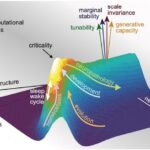
Credit: wir0man/Getty Images
In a step toward treating mitochondrial diseases, researchers at the University Medical Center Utrecht and their colleagues have used mitochondrial base editing (mtBE) to successfully edit harmful mutations in mitochondrial DNA. Through their newly reported study, the team, headed by Martijn Koppens, PhD, used the double-stranded DNA deaminase toxin A-derived cytosine base editor (DdCBE) to develop in vitro disease models and assess therapeutic strategies for mitochondrial diseases in primary human cells.
The team suggests the results of their work could offer new hope for people with rare genetic conditions. Koppens and colleagues reported on their findings in PLOS Biology in a paper titled “Correction of pathogenic mitochondrial DNA in patient-derived disease models using mitochondrial base editors.” In their paper, the team said, “In summary, our research demonstrates the effectiveness of mtBE in primary adult human cells, leading to the recovery of mitochondrial function—two critical aspects for further development of mitochondrial gene therapy.”
Mitochondria, sometimes referred to as the powerhouses of the cell, have their own small set of DNA, or mitochondrial genome. Mutations in this mitochondrial DNA can lead to a wide range of maternally inherited diseases, cancer, and aging-related conditions. The development of CRISPR technology has given scientists new ways to correct mutations in nuclear DNA; this system cannot effectively cross the mitochondrial membrane and reach mitochondrial DNA. “This has basically left mitochondrial genetics in a pre-genetic engineering era and mitochondrial patients unable to benefit from advancements in gene correction strategies,” the authors wrote.
Recently, the development of the double-stranded DNA deaminase toxin A (DddA)-derived cytosine base editor (DdCBE) has addressed this problem and allowed scientists to introduce edits in the mitochondrial genome by using a CRISPR/Cas-independent system, the team continued. For their newly reported study, the researchers used this DdCBE tool to change a single letter in the mitochondrial DNA code without cutting it.
The team showed that they could effectively generate and correct mitochondrial DNA mutations in multiple disease-linked cell types in the lab. “To explore the potential of clinical application of DdCBE-mediated mitochondrial DNA gene editing, we generated and functionally corrected pathogenic mutations in relevant cell types,” they commented. First, they engineered liver cells to carry a mitochondrial mutation that impairs energy production. “Introduction of the m.15150G > A mutation in liver organoids resulted in organoid lines with varying degrees of heteroplasmy and correspondingly reduced ATP production, providing a unique model to study functional consequences of different levels of heteroplasmy of this mutation,” they stated.
Then they showed they could fix a different mutation in skin cells taken from a patient with the mitochondrial disorder Gitelman-like syndrome, restoring key signs of healthy mitochondrial function. “Correction of the m.4291T > C mutation in patient-derived fibroblasts restored mitochondrial membrane potential,” they stated. “DdCBE generated sustainable edits with high specificity and product purity.”
![Patient-derived liver organoids and their mitochondria (red). [Martijn Koppens (CC-BY 4.0, https://creativecommons.org/licenses/by/4.0/)]](https://www.genengnews.com/wp-content/uploads/2025/06/low-res-14-300x169.jpeg)
To help move the therapy toward clinical use, the researchers also tested the efficacy of delivering the mitochondrial base editors in mRNA form, rather than as DNA, and within lipid nanoparticles for delivery. “To prepare for clinical application, we found that mRNA-mediated mitochondrial base editing resulted in increased efficiency and cellular viability compared to DNA-mediated editing,” they noted. “Moreover, we showed efficient delivery of the mRNA mitochondrial base editors using lipid nanoparticles, which is currently the most advanced non-viral in vivo delivery system for gene products.”
The investigators demonstrated that these approaches are more efficient and less toxic to cells than older methods like DNA plasmids. Importantly, the edits were highly specific, with minimal off-target changes detected in nuclear DNA and multiple detected in mitochondrial DNA.
The authors stated, “Mitochondrial patients have not been able to benefit from the CRISPR revolution for so long, but recently the technology has become available with which we can finally repair mitochondrial mutations. In our study, we used this technology on human liver organoids to generate a mitochondrial disease model. We employed a clinic-grade technique to repair a mutation in the mitochondrial DNA of patient-derived cells.”
And in their paper, the investigators concluded, “While there are challenges and areas for further investigation, the potential of mtBE in disease modeling and potential therapeutic interventions makes it a promising avenue for future research and development in mitochondrial medicine.”


